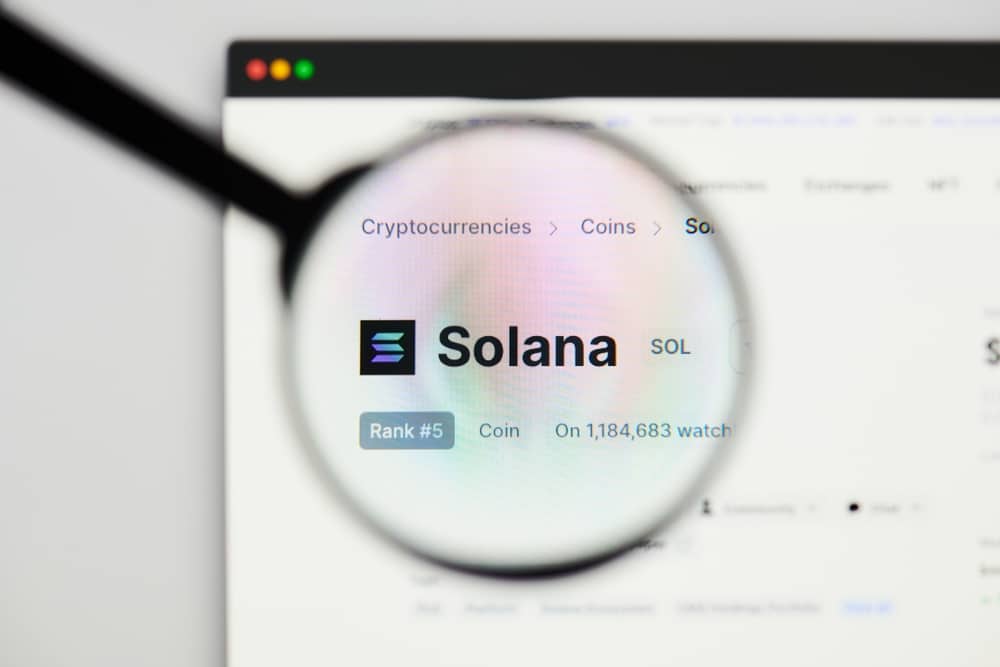
Solana Tops Blockchain Payments as Stablecoins’ Liquidity and Investor Sentiments Improve, Bernstein Reports
Research specialist Berstein reveals in its Tuesday, April 9 note to the clients that Solana tops the blockchain payments’ battle despite scalability challenges. The analyst firm revealed in the note that Solana’s leadership coincides with the stablecoin market resurgence, which is illustrated by improved investor sentiment and liquidity.
The brokerage firm reflects on the present cycle, in which Solana commands a dominant market share among the blockchains. Bernstein’s analysts’ duo Gautam Chhugani and Mahika Sapra note the big change where Solana accounts for 43% of the stablecoins-based transfers, triumphing over the previous cycle leader, Ethereum.
Stablecoin Settled on Solana
A reflection of the stablecoin metrics by Bernstein analysts saw increased liquidity in the present cycle relative to the previous period. Chhugani and Sapra indicated that the stablecoin had settled on the Solana network.
The analysts argued that Solana involves a single-layer design without the complexity of bridging layer 2s, as witnessed on Ethereum. The Solana blockchain has witnessed direct on-ramps executed by the crypto exchanges, improved throughput, and lower transaction costs.
The Bernstein analysts observed that Solana had, since the onset of this year, gained ground to the detriment of Ethereum as per Artemis Terminal. Nonetheless, Solana lags behind the number of stablecoins issued on Ethereum.
The leading stablecoin on the Solana blockchain only commands $2.2 billion in supply, unlike $26.4 billion in Ethereum. Nonetheless, Bernstein analysts observed that the Solana-based stablecoin is gaining market share.
Beyond Solana hosting global settlement for cross-border payments, the blockchain has struggled to break into mainstream consumer and business-to-business payments. However, the analysts acknowledged that Solana has conducted pilots with Shopify and Visa.
Solana Facing Scalability Issues
Chhugani and Sapra pointed out the scalability requirements as presenting the primary bottleneck. The analysts observed that it now requires a 15-20 fold increment in transactions per second (TPS) to demand over 10,000 TPS from 700 TPS. The requirement is high, with blockchains typically yet to hit such levels.
The Bernstein analysts report that the Solana network is struggling with congestion issues. Such occurrences have led to noticeable delays within the transaction processing, causing a drop in transactions executed.
Bernstein analysts attribute the congestion to spam transactions, particularly with bots prioritizing activities over regular users. Nonetheless, the analysts noted that the Solana team has ongoing initiatives to patch and update the software to overcome the above issues. Such initiatives will take time to deploy.
Resurgence in the Stablecoin Market
Bernstein analysts report that the stablecoin segment is garnering uptrend steam toward the $180 billion realized in 2021. The analysts lament that the March to 2021 figures have been a tortious journey to recover from the chains of the crypto bear market that saw the entire market value plunge 33% to $120 billion.
The analysts disclosed that the improving crypto market sentiment witnessed since late 2023 has stimulated stablecoin growth. The analysts approximate the circulating supply at $150 billion.
Bernstein’s analysts observed that Tether’s USDT accounts for three-quarter dominance. Circle’s USD Coin (USDC) accounts for 22% of the market share.
Although the stablecoin supply is growing, the analysts observed that value settled and transactions executed on blockchains such as Ethereum remained static. The amount transacted was estimated at $5 trillion last year compared to the $7 trillion executed in 2022.
The scrutiny of the 2024 quarter 1 shows the annualized value executed great at $6.8 trillion. The monthly stablecoin-based transfer across the blockchains rose threefold from $630M in September last year to $1.9B in March.
The rise in stablecoin value across the blockchains illustrates the strong adoption of the digital-backed dollar within the crypto ecosystem. Also, the digital dollar has witnessed widespread adoption in cross-border payments.
Sapra and Chhugani consider that the global crypto ecosystem fuels the initial usage of stablecoin. Still, the adoption is led by other payment players entering the space, such as Visa and Paypal. Consumer fintech protocols such as MELI in South America and Singapore-based Grab have recently fueled the adoption.
Editorial credit: Casimiro PT / Shutterstock.com




